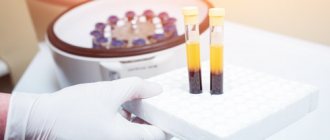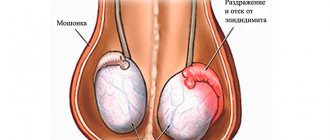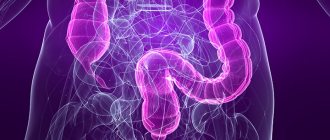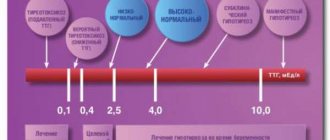What does the abbreviation mean?
In medicine, the abbreviation GGT refers to the enzyme (otherwise known as enzyme) gamma-glutamyltransferase. Its main function in the human body and all representatives of the animal world is participation in the metabolism of amino acids (ABA). To simplify, we can say that amino acids are organic compounds that form the basis of proteins. The synthesis of some proteins (anabolic process) is accompanied by the breakdown of others (catabolic process). This is the essence of the AMK exchange.
During protein metabolism, peptides are formed: substances consisting of residues of two or more amino acids.
Since protein synthesis is a complex and stepwise process, it is accompanied by the transfer (transport) of such residues from one molecular compound to another, including simple and intermediate (amino acids, peptides, polypeptides) and final or complex (proteins). A polypeptide can already be considered a protein if it contains 50 or more amino acid residues.
What role does gamma-glutamyltransferase play in all this? This enzyme is responsible for catalyzing the transport of the gamma-glutamyl residue extracted from the gamma-glutamyl peptide (by the way, the enzyme is also called gamma-glutamyl transpeptitase, or GGTP). This transfer can be to an amino acid, another peptide, or to water . The latter occurs during the hydrolysis of proteins - when they are broken down into amino acids.
In a broad sense, catalysis (catalysis) is understood as a change in the rate of flow of a given direction of a biochemical or any chemical reaction. In this case, the quantity and state of substances present as catalysts (controlling the acceleration or deceleration of the process) do not change. GGT is an example of such a catalyst.
Due to its specific role, gamma glutamyl transferase is primarily naturally concentrated in the kidneys, pancreas and liver. The accumulation of this enzyme is especially high in the kidneys. Here, GGT can be contained 500 times more than in the liver, and 7000 times more than in blood serum. There is noticeably less enzyme in the spleen, intestines, heart and brain cells. Localization of GGT at the cellular level occurs in the cytoplasm, lysosomes and membrane.
When is the study conducted?
There are characteristic complaints and symptoms in which the doctor is almost guaranteed to refer the patient for analysis of GGT levels:
- prolonged absence or loss of appetite;
- pain in the hypochondrium on the right side;
- dark color of urine and (or) light color of feces;
- regular attacks of nausea and vomiting;
- icteric color of the skin.
The same referral will be made for suspected hepatitis C, for the development of cholelithiasis, cholecystitis, for symptoms of cholangitis or signs of cholestatic syndrome. In this case, the analysis will allow not only to identify, but also to differentiate the disease from the specified list, while in a number of characteristics they are very similar.
Other characteristic indications:
- heart failure, previous myocardial infarction;
- assessing the success of surgery to treat the liver or kidneys;
- past or ongoing somatic and infectious diseases;
- allergic reactions to medications that lead to general intoxication of the body;
- pathologies of the hepatobiliary system, blockage of the bile ducts;
- any neoplasms in the liver and pancreas;
- general diagnostics of the gastrointestinal tract;
- kidney dysfunction.
GGT analysis is of particular importance in the treatment of chronic alcoholism . This study makes it possible to accurately identify the patient’s level of chemical dependence on ethanol and assess the degree of damage to his liver.
For control and preventive purposes, analysis is recommended to be carried out once a year. The limit on the total volume of blood drawn over a one-year period is the rate at which the patient's red blood cell level recovers.
How to reduce enzyme levels
To bring the enzyme level back to normal, it is necessary to eliminate the cause of its increase. Depending on the disease and severity, the patient is prescribed medication.
To achieve a high therapeutic effect, it is important to quit smoking and drinking alcohol, lead a healthy lifestyle, and avoid stress and physical fatigue.
Physical exercise stabilizes GGT levels
Gamma-glutamyl transpeptidase plays an important role in biochemical blood tests. The enzyme is sensitive to pathological changes in the liver and gall bladder, which makes it possible to identify dangerous diseases in the early stages. Even a slight increase in GGTP should prompt a person to undergo a full examination and determine the true cause of deviations from the norm.
Rate this article ( 2 ratings, average 4.50 out of 5)
Biochemical blood analysis is an integral part of the diagnosis of a wide range of pathological conditions.
A detailed study of enzymes, among which the GGTP indicator in a blood test is especially important, makes it possible to assess the condition of all organs and systems of the patient.
Norm: decoding of indicators
The normal level of gamma-glutamyltransferase in the blood is determined by a person’s age and gender. Special criteria for assessing norms and deviations are also used for pregnant women. Decoding is performed by a laboratory specialist. Guided by reference data, you can independently compare your indicators with normal ones.
In any case, only a specialized physician can determine exactly what the analysis shows in the case of a particular patient . As a rule, this is the supervising (attending) doctor who gave the referral for the study.
It is useful to indicate differentiated normative indicators (otherwise, reference values) of the level of the GGT enzyme in the blood in relation to adults and children. These standards are established based on average values obtained from extensive laboratory testing of a specific indicator in a healthy population.
For adults
- Men - from 10 to 72 units.
- Women - from 6 to 42 units.
The adult category covers people 18 years of age and older. The relatively higher level of GGT in males is explained by the possible presence of the enzyme in the prostate gland.
For children
- From birth to 5 days – up to 185 units.
- Up to 6 months – up to 202-205 units.
- From 6 months to 1 year – up to 34-36 units.
- From 1 year to 3 years – up to 18 units.
- From 3 to 6 years – up to 22-23 units.
- From 6 to 12 years – up to 16-17 units.
- Boys from 12 to 17 years old - up to 40-45 units.
- Girls from 12 to 17 years old – up to 33 units.
Treatment
The fundamental principle of normalizing indicators is eliminating the disease that is the root cause of their change.
Compliance with the doctor’s recommendations regarding additional examination methods and the prescribed treatment regimen makes it possible to quickly achieve positive results.
Downgrade Methods
Among the ways to effectively influence the diseases that caused increased indicators are the following:
- Treatment of cholestasis with Ursosan, Urdox, Ursofalk.
- Skin itching caused by difficulty in bile excretion is eliminated by Rifampicin and Cholestyramine. Choleretic drugs - Urolesan, Allochol, Decholin - are used to eliminate stagnation of secretions. However, it should be taken into account that in case of cholelithiasis and acute hepatitis, these drugs are contraindicated.
- The condition of the liver is stabilized by Livolin, Rezalut, Essentiale.
Quitting alcohol also helps lower GGTP.
Proper nutrition, which includes excluding fatty, fried and spicy foods from the diet, as well as an active lifestyle, make it possible to lower the concentration of these enzymes in the blood.
Why can it be increased and what is the danger?
Exceeding reference values is a signal about the possible development of pathological processes in internal organs. As a rule, an increased level of GGT coincides with a general increase in protein in the blood plasma, which indicates the active process of destruction of cells of any internal organ (primarily the liver), fragments of which enter the blood. Ignoring such data is dangerous. Especially against the background of other alarming symptoms.
In relation to diseases of the liver, kidneys, pancreas or gall bladder, a high GGT value may indicate the following pathologies:
- acute or sluggish course of hepatitis;
- acute or chronic glomerulonephritis;
- seals or stones in the biliary tract;
- biliary cirrhosis (inflammation in the bile ducts);
- Infectious mononucleosis;
- oncological formations;
- pancreatitis.
Examples of other diseases in which an increase in the indicator is observed:
- cardiovascular pathologies, including unstable angina or previous heart attack;
- oncology of the prostate gland, mammary glands, lungs;
- metastases in the liver due to any location of cancer;
- intoxication with thyroid hormones (hyperthyroidism);
- diabetes mellitus of varying severity;
- obesity;
- alcoholism.
Diagnosis of diseases
Depending on the overall clinical picture, other blood parameters and test results, the doctor may suspect the development of certain diseases in you. Thus, gamma HT can be increased with the following ailments:
1. Cholestasis - the amount of the enzyme increases in both extrahepatic and intrahepatic forms of the disease. In this case, problems such as gallstones, obstructive jaundice caused by a liver tumor, and cholangitis appear.
2. Acute hepatitis of viral etiology, various toxic diseases.
3. Chronic hepatitis.
4. Pancreatitis - GGT will be increased both in acute and chronic forms.
5. Alcoholism.
6. Oncological diseases of the liver, pancreas or prostate.
In addition, if you are taking oral contraceptives, barbiturates, estrogens, or cephalosporins, your gamma TG levels may also be increased. You should not try to diagnose your illnesses yourself; only a doctor can diagnose them.
Reasons for the downgrade
A reduced GGT level is a relatively rare observation during analysis. Although other reasons are possible, most often such data is obtained in one of three cases:
- with hypothyroidism or myxedema (insufficient hormonal secretion of the thyroid gland or acute deficiency of thyroid hormones);
- in the treatment of alcoholism - a month (or so) after quitting alcohol (due to the removal of ethanol from the metabolism as an external stimulator of GGT production);
- due to decompensated cirrhosis of the liver.
A decrease in GGT may be a consequence of pharmacological treatment: taking hormonal drugs, cholesterol-lowering agents.
Reasons for gamma GT deviation
The sample is taken directly from a vein, and blood testing can take hours, even days. A person receives the result on a special basis. form, which the doctor will explain. Correct decoding depends on the patient correctly following the rules before preparing for the test. In case of deviations, the reasons may be the following:
- the content of a variety of ascorbic acid in the body;
- effects from aspirin or paracetamol;
- too frequent use of hormonal contraceptives;
- use of antidepressants;
- hepatitis;
- diabetes;
- rheumatoid arthritis;
- autoimmune pathologies;
- liver cancer, death of liver tissue;
- jaundice;
- lupus erythematosus;
- a malignant tumor that spreads to the liver.
In cases with a decrease, this can be facilitated by drugs to lower cholesterol and treatment of alcohol dependence.
It is the attending physician who must interpret the blood test; if the person himself understands what’s what, he should still contact a specialist, as there is a risk of harming himself. There have been cases when the patient was prescribed additional. research for a more accurate result.
An increase or decrease in GGT (if it is insignificant, there is no need to worry) requires medical supervision in any case, do not neglect this and try to cope with the problem on your own.
How to prepare for testing?
To avoid false results, it is advised to follow certain measures during preparation. Follow the instructions below so that your analysis is more accurate and will help you correctly diagnose the disease:
Collection of blood tests
- donate blood on an empty stomach, do not eat or drink absolutely anything 8-10 hours before the test. The procedure is carried out in the morning, when the body is hungry;
- 24-48 hours before donating blood, you should not eat fatty, spicy and overly fried foods, they can increase the indicators;
- do not engage in sports or exercise. loads, for 2 days, as this can also affect the result;
- the day before it is not recommended to take baths, saunas or hot baths;
- the day before the upcoming procedure, give up alcohol and cigarettes;
- 48 hours before the test, stop taking any medications, if for some reason this is not possible, tell your doctor that he has this in mind;
- come to donate blood without shortness of breath or nerves, stay in the room for 15 minutes so that your body gets used to its temperature.
Prevention of the disease:
- rest during the day, especially if your working day is constantly stressful;
- do not overdo it with physical activity;
- give up alcohol and cigarettes;
- balance your diet;
- do not overcool or overheat the body;
- avoid stress, both in joy and in anger;
- go in for sports (running, horizontal bar, cycling, etc.)
- Get your blood tested at least once a year.
Follow the advice (if not all, then at least most) and you will protect yourself from most diseases.
What can affect the result?
The analysis data is influenced not only by pathological processes in the body. For example, an increase in the level of GGT in the blood is observed when taking a number of medications. Most often this is:
- hormonal drugs;
- antibiotics;
- paracetamol;
- aspirin;
- or antidepressants.
The same effect is caused by the abuse of vitamin C (ascorbic acid) and even simply an incorrect diet.
Despite the value of the data obtained through biochemical analysis, the GGT level alone does not accurately determine the disease or assess the patient's condition . However, during a comprehensive examination of the body, this indicator is indispensable for differential diagnosis.
How to prepare for the analysis
In order for the test results to be correct and most accurately reflect the state of the internal organs, you need to carefully prepare for blood donation. To do this, the day before donating the biomaterial, you need to give up alcoholic beverages and any medications that affect liver function.
Also, the day before the test, you should avoid fatty and heavy foods. Before blood collection, the patient should not eat for at least 8 hours, i.e. blood is taken on an empty stomach. The patient is prohibited from smoking for at least an hour before serum collection. Typically, blood from a vein is used for the test, but in rare cases, blood from a finger prick may be required. If you cannot refuse certain medications, you must inform both the laboratory assistant and the treating specialist about their use. Blood is not taken for GGT on the day when the patient was prescribed an ultrasound, x-ray, computed tomography or magnetic resonance imaging. All these procedures affect the patient's blood condition and may lead to incorrect results. Procedures performed by a physiotherapist and rectal examinations are also prohibited. If the preparation is carried out correctly and all the requirements for its implementation are met accurately, the analysis will give accurate and correct results that will affect the further diagnosis and prescription of treatment.
Author: E. Kubina












